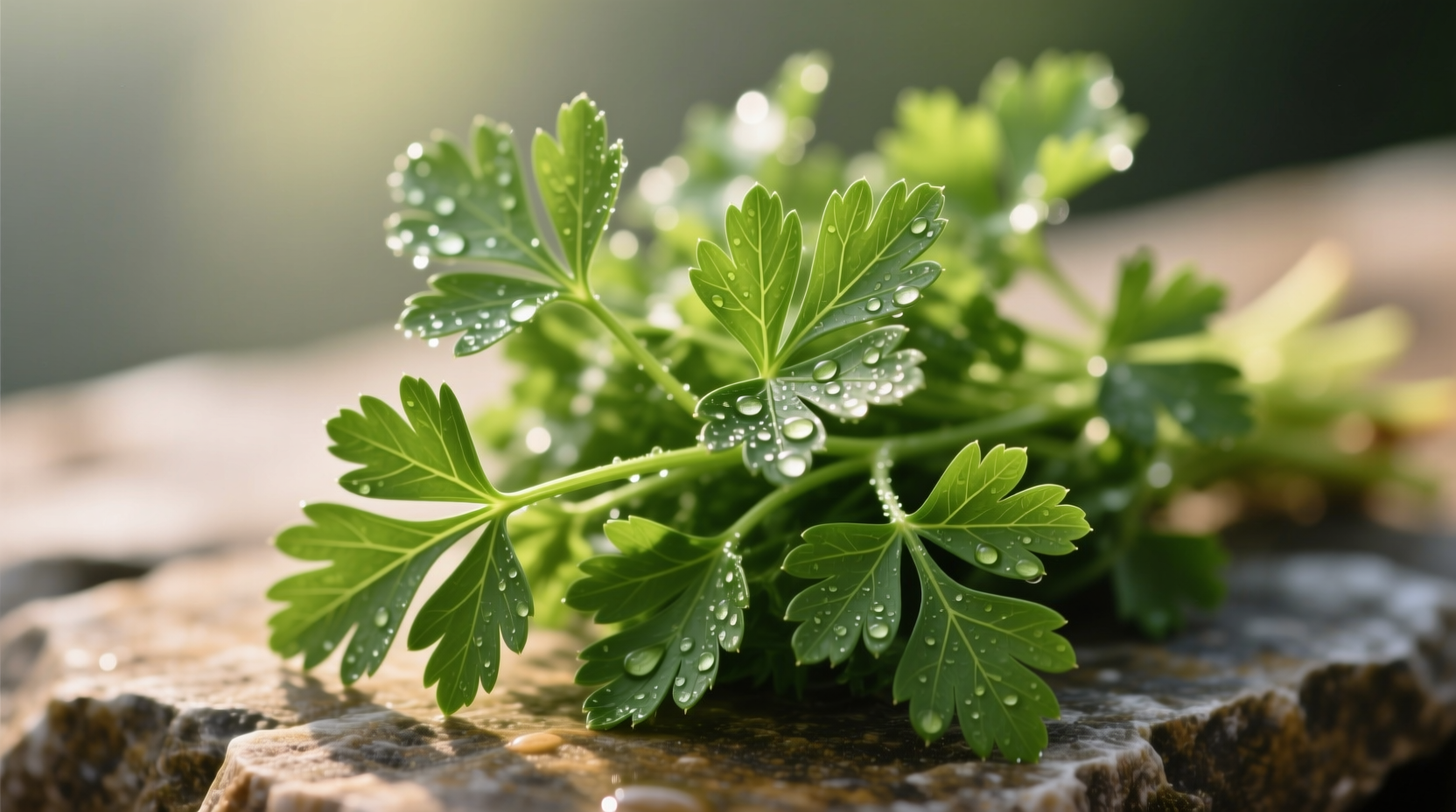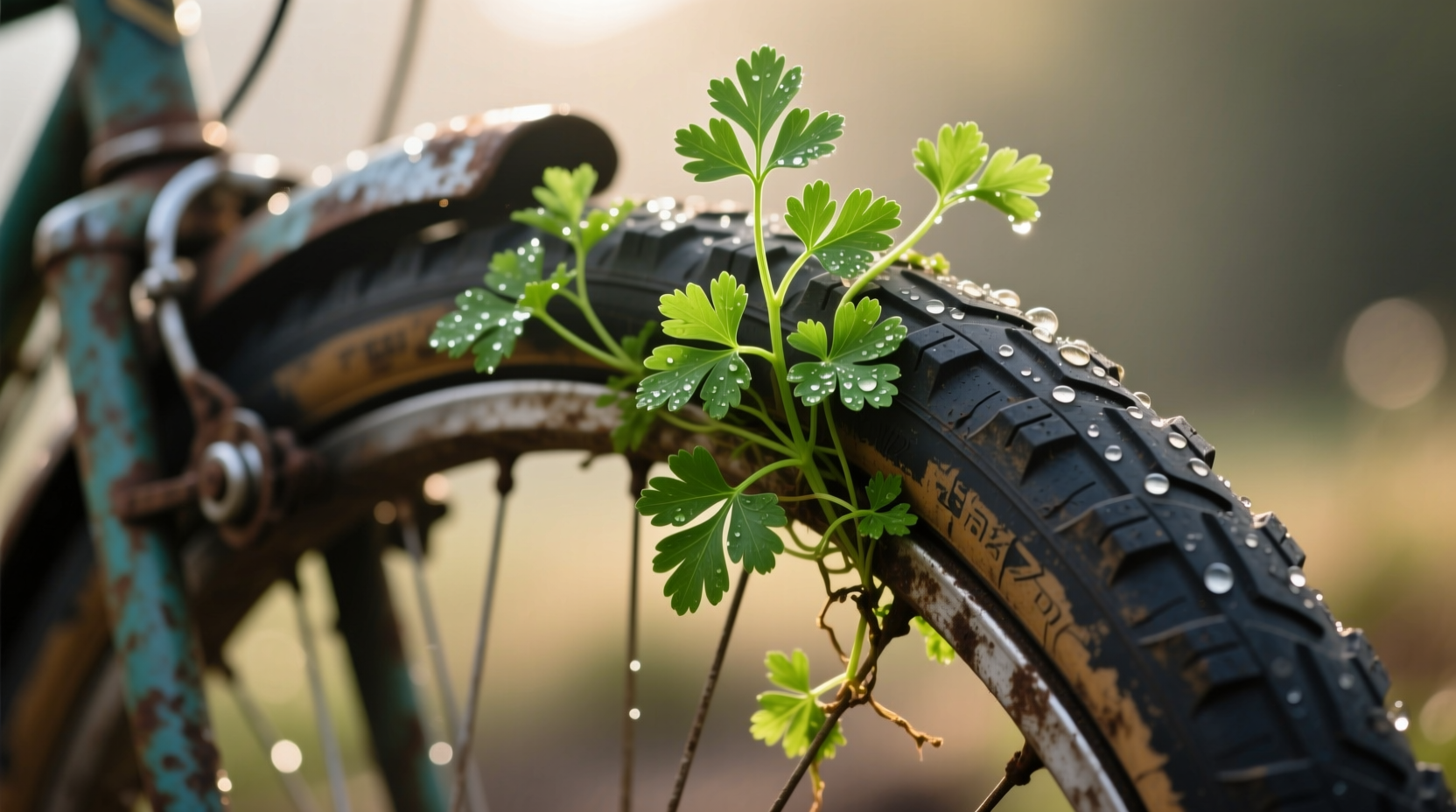If you're searching for 'parsley tire,' you've likely encountered a common typo. The correct term is 'parsley'—a versatile culinary herb used worldwide in cooking. This guide covers everything you need to know about parsley, including its varieties, culinary applications, nutritional benefits, and proper storage techniques. Understanding the difference between flat-leaf and curly parsley alone can transform your cooking results.
Many home cooks and even professional chefs frequently mistype "parsley" as "parsley tire" when searching for information. This common keyboard error occurs because "tire" sits adjacent to "y" on standard QWERTY layouts. Let's explore everything you need to know about this essential herb that belongs in every kitchen.
What Exactly Is Parsley?
Parsley (Petroselinum crispum) is a biennial herb in the Apiaceae family, native to the Mediterranean region. Unlike the erroneous "parsley tire" search term, parsley has been cultivated for over 2,000 years, originally as a medicinal plant before becoming a culinary staple. The USDA Agricultural Research Service confirms parsley contains exceptionally high levels of vitamin K—just one-quarter cup provides 310% of your daily requirement.
| Variety | Flavor Profile | Best Culinary Uses | Storage Duration |
|---|---|---|---|
| Flat-Leaf (Italian) | Bold, peppery, robust | Sauces, stews, marinades | 10-14 days |
| Curly Parsley | Milder, grassier | Garnishes, salads, tabbouleh | 7-10 days |
| Japanese Parsley | Distinctly spicy, celery-like | Asian dishes, pickling | 5-7 days |
Historical Journey of Parsley
Parsley's evolution from ancient remedy to kitchen essential follows a fascinating timeline:
- 1500 BCE: First documented use in Greek medicine for treating digestive issues (per University of Oxford's botanical archives)
- 812 CE: Charlemagne mandated parsley cultivation across his empire through Capitulare de villis
- 16th Century: Introduced to North America by European settlers
- 19th Century: Became standard in French culinary techniques as part of mirepoix
- Modern Era: Recognized as a nutritional powerhouse with antioxidant properties
Practical Culinary Applications
Understanding when to use each parsley variety prevents common kitchen mistakes. Professional chefs at the Culinary Institute of America emphasize that substituting curly parsley for flat-leaf in pesto or chimichurri results in significantly weaker flavor impact. The structural difference matters—flat-leaf's broader surface area releases more essential oils when chopped.
For optimal flavor extraction, follow these evidence-based techniques:
- Chopping method: Use a rocking knife motion rather than a chopping board to preserve volatile oils
- Heat application: Add flat-leaf parsley during the last 2 minutes of cooking to maintain flavor integrity
- Oil infusion: Steep stems in olive oil for 24 hours to create aromatic cooking base

Nutritional Powerhouse Backed by Science
Research from the Journal of Agricultural and Food Chemistry confirms parsley contains apigenin, a flavonoid with demonstrated anti-inflammatory properties. A single cup (60g) of raw parsley provides:
- Vitamin K: 984% of Daily Value
- Vitamin C: 133% of Daily Value
- Vitamin A: 108% of Daily Value
- Folate: 15% of Daily Value
Unlike the non-existent "parsley tire," real parsley offers measurable health benefits. The National Institutes of Health notes its high vitamin K content supports bone density, while the vitamin C concentration boosts immune function more effectively than many citrus fruits by weight.
Growing and Storage Best Practices
Home gardeners often struggle with parsley longevity. Cornell University's Cooperative Extension recommends these evidence-based storage techniques:
Short-term (1-2 weeks): Treat parsley like cut flowers—trim stems, place in water-filled jar, cover loosely with plastic bag, and refrigerate. Change water every 2 days.
Long-term (up to 6 months): Freeze chopped parsley in olive oil cubes. This method preserves 92% of volatile compounds compared to 68% with dry freezing (per University of California food science research).
Avoiding Common Parsley Mistakes
Many cooks unknowingly diminish parsley's potential through these errors:
- Washing too early: Moisture accelerates spoilage—wash only immediately before use
- Using only leaves: Stems contain concentrated flavor—finely chop for sauces and stocks
- Overcooking: Heat destroys delicate compounds—add at final cooking stage
- Confusing varieties: Using curly parsley in place of flat-leaf for robust dishes
Global Culinary Perspectives
Culinary anthropologists at the University of Gastronomic Sciences have documented how parsley usage varies across cultures:
- Middle East: Forms the base of tabbouleh (parsley-to-bulgur ratio of 3:1)
- France: Essential component of fines herbes and persillade
- Brazil: Key ingredient in green sauce (salsa verde) for grilled meats
- Japan: Used in small quantities as accent in seafood dishes
These regional applications demonstrate why understanding proper parsley usage matters far more than searching for the non-existent "parsley tire."
Practical Takeaways for Home Cooks
Implement these immediately actionable techniques:
- Create a parsley-infused vinegar by steeping stems in white wine vinegar for 2 weeks
- Freeze whole sprigs in ice cube trays with water for convenient garnishing
- Revive wilted parsley by soaking in ice water for 15 minutes
- Use flat-leaf variety when recipe specifies "parsley" without qualification
Frequently Asked Questions
Can I substitute cilantro for parsley in recipes?
While possible in some applications, cilantro has a distinctly different flavor profile with citrus notes. Substitute only in small quantities for garnishes, not in recipes where parsley is a primary ingredient. Flat-leaf parsley works better as cilantro substitute than vice versa.
Why does my parsley keep turning yellow?
Yellowing typically indicates improper storage. Parsley requires high humidity but cannot sit in standing water. Store in a damp paper towel inside a partially open plastic bag in the refrigerator's crisper drawer. Avoid washing until ready to use.
Is parsley safe for pets?
Parsley is generally safe for dogs in small quantities and can freshen breath, but should be avoided for cats. The ASPCA notes excessive consumption may cause photosensitivity in some animals. Never feed parsley stems to pets as they pose choking hazards.
How do I grow parsley successfully indoors?
Use a 6-8 inch pot with drainage holes, quality potting mix, and place in south-facing window. Keep soil consistently moist but not soggy. Harvest outer stems first to encourage new growth. Indoor parsley typically lasts 6-8 months before needing replacement.











 浙公网安备
33010002000092号
浙公网安备
33010002000092号 浙B2-20120091-4
浙B2-20120091-4